Around the world, the cost of housing is destabilizing cities. In Europe, low interest rates meant to spur growth have caused an affordability crisis. American cities are sprouting the kinds of slums usually associated with the developing world. Some have even argued that Hong Kong’s protests are, in reality, about a real estate market that has gotten so expensive young folks have essentially no chance of getting their own place.
What can be done? How can cities make sure that people other than the wealthy can find a foothold? A few places have shown that affordability is possible. One is Vienna, Austria.
A century of affordable housing
A hundred years ago, in 1919, Vienna decided to do something about its shortage of low-cost housing for blue-collar workers and creative types. It began constructing publicly financed housing under a model that, over the years, has evolved into a system that works incredibly well. Far from being “projects,” “council houses,” or “schemies,” this is housing built by the best architects, where, over time, people of all income levels have come to live. It’s not perfect, but it’s pretty close.
Today, 62 percent of Vienna residents live in this “social housing.” (In New York, where I live, about eight percent of residents call public housing home.) This is a city that has, for many years running, been voted one of the most livable large cities in the world. Clearly they’re doing something right.
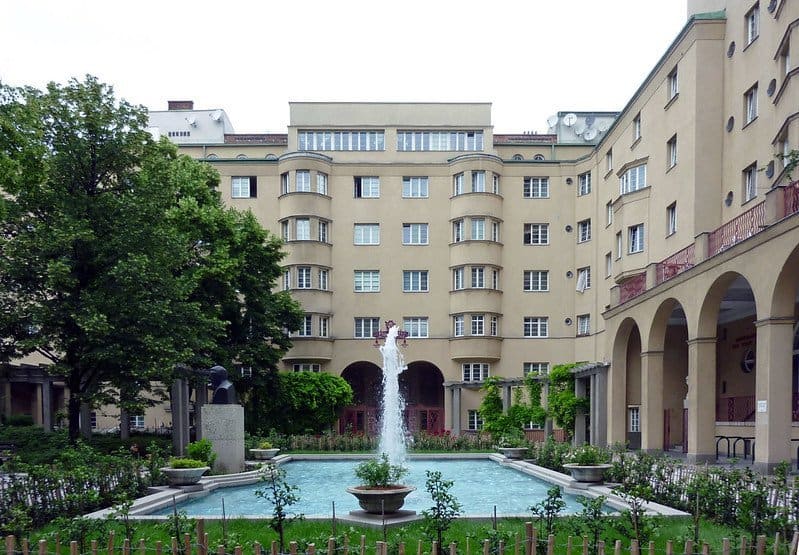
The historical housing “problem”
Cities need a mix of residents and a fair amount of density for folks to energize and be inspired by one another… and for the city to function well. Yet many have struggled to provide the housing needed to achieve this. When people are priced out, as many are these days, cities become less livable, less innovative and over time, less productive.
My daughter’s friends — mostly creative types, furniture makers, artists and the like — have been driven to the edges of Brooklyn, seeking places where they can work and live, and still have access to the resources of the city. Most of them, she now tells me, are giving up and looking for places upstate. Being an artist or creative type has often necessitated some hardships, but this trend is not just “it’s tough for creatives” — it’s the result of policy decisions.
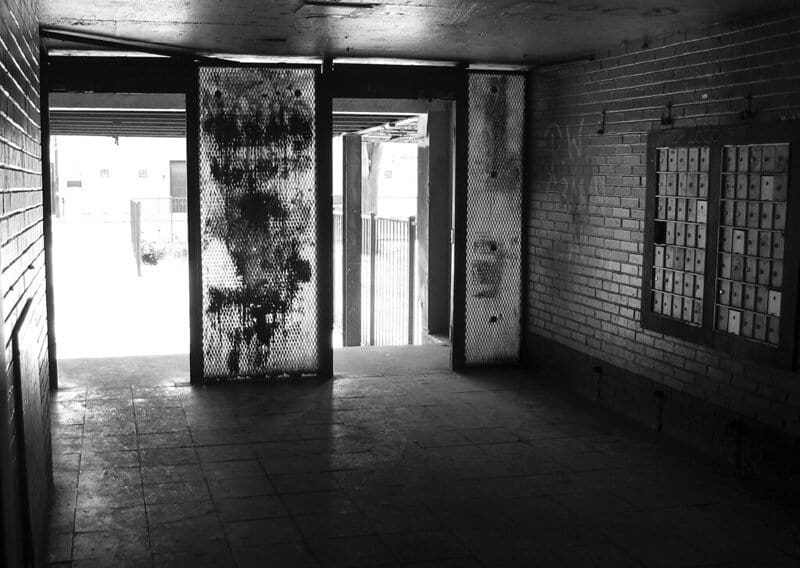
The long history of white flight and of cities emptied out by suburban-oriented car-friendly policies has proven this. Famously, in places like the U.S., attempts to build quality low-income housing have fallen short when the political will to manage the details has failed to materialize. Affordable housing was viewed as a handout and not something critical to a city’s lifeblood.
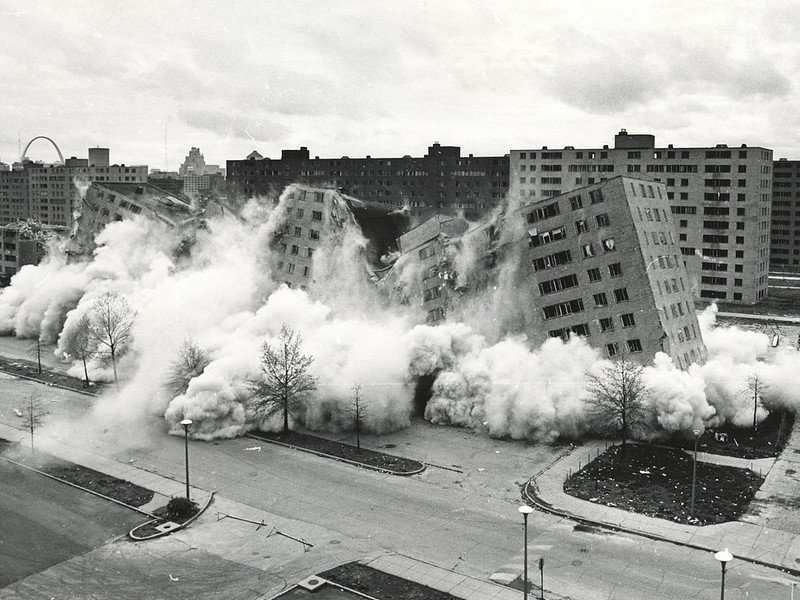
Cities seeking alternatives to their present predicament might want to look to Vienna, which has demonstrated a century of success with its subsidized social housing model. Below is a social housing complex by the artist and designer Friedensreich Hundertwasser, who famously hated straight lines. He once said, “The straight line is godless and immoral.” That may be a bit extreme, but his other dictums — that windows must be within arm’s reach, for example — are admirable.
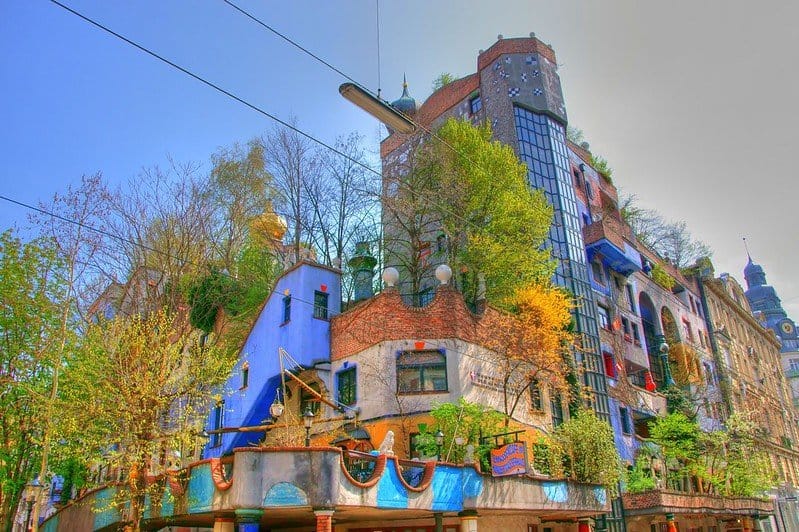
Hundertwasser’s social housing complex has become a tourist attraction — some of the band and I went there while on tour in 2001. It’s both wacky and wonderful. The floors and walls are as uneven as the exterior. Who wouldn’t want to have an apartment there? It totally destroys our preconceived ideas about social housing — that it will inevitably be drab, cookie-cutter and somewhat degrading.
From the New York Times on January 8, 1987, just after this apartment building opened:
Many tenants, who were admitted on a first-come, first-served basis, are young people with families (”older people are a bit anxious about living like this,” Mr. Roettinger [a city spokesman] explained). Tenants pay an initial $20,000 deposit, which is partly refundable, plus a monthly rent averaging around $100. Couples whose joint income exceeds $25,500 are not eligible.

That was in 1987, but it shows one of Vienna’s key social housing policies: low income folks are often the first tenants, but if their financial lot improves they are not kicked out. So they stay.
Vienna is still building social housing to this day. Despite the recent rise of politicians who might not be as inclined to support this system, it continues to thrive. My friend Stefan Sagmeister, an artist who recently had an exhibition in Vienna, said that these days a 1,000-square-foot apartment in social housing goes for about 190 euros a month. And public transportation is close by.
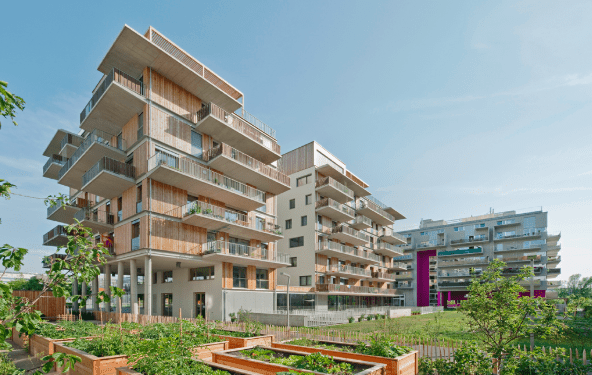
In fact, middle-class Viennese are now welcome to apply for subsidized social housing, and if their income rises they can stay in the same apartment, which helps create mixed-income buildings. You might think all these newly middle-class folks would eventually crowd out the low-income applicants, but because the city keeps building more of these there are plenty of new apartments to be had. The nearby public transportation that serves these communities is essential to their success, as well.
Although housing in the relatively small city center (inside the Ringstrasse) is mostly expensive luxury apartments, social housing projects are more or less scattered throughout the rest of Vienna. Within each neighborhood, and even within each building, one can find tenants from a wide range of economic circumstances. As the city’s councilor for housing told the Huffington Post, “You can’t tell how much someone earns simply by looking at their home address.”
So, here are a couple of the major public housing issues solved: availability of apartments, and mixed incomes within the neighborhoods and often within the same building.
How did this happen? How does it work?
A century ago, Austria was catching up with the wave of industrialization that had swept Europe, and folks from all over the former Habsburg Empire were flocking to Vienna in search of work. After World War I, so many people were moving to Vienna that there wasn’t enough housing for all of them. Some began building shanty settlements outside the city — squatters in the suburbs, basically. They built their own blocks and streets, and farmed the available land. In the city proper, folks were sleeping in shifts in crowded apartments. At that time, only wealthy men could vote, many of whom were landlords. So there were few safeguards, rights or options for tenants.
Weighed down by negative news?
Our smart, bright, weekly newsletter is the uplift you’ve been looking for.After the war, everyone was given the right to vote. This changed everything. Folks began demanding a right to housing, and the new voters supported the left-wing Social Democrats. The party got 54 percent of the vote, and once in power, they passed a rent control law that also gave the city the right to take over vacant property. Rent control can have the effect of reducing the availability of housing, as developers can’t see a way to profit with rents suppressed, and that happened in Vienna, too. As available land went undeveloped and became cheaper, the city bought it up and began to build subsidized housing.
They solicited highly skilled, innovative architects, so the buildings were nice, and though the early apartments were small, there were lots of amenities that people had never had access to before: laundries, gardens, nurseries, playgrounds, libraries, counseling offices, rooms for political gathering and debate (!!), courtyards and even kindergartens.
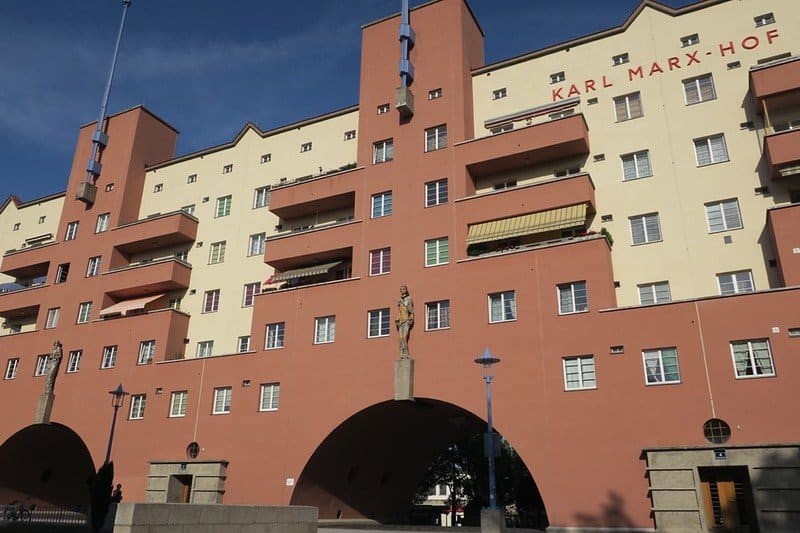
Although these projects began in the suburbs, the city ultimately bought parcels of land all over Vienna. As a result, social housing was not clustered in any one area. It became part of the fabric of the city.
How were these paid for?
“Red Vienna,” as the city was known in the ‘20s for its pro-worker, socialist mindset, had no problem accepting tax schemes to pay for all this. Capital gains taxes, luxury taxes and a progressive housing tax that ranged from two percent for workers’ housing up to 55 percent for luxury apartments provided plenty of funding for the city’s social housing program.
All of this, though very successful, was put on hold from the mid-1930s until 1945 when the Social Democratic Party was banned under Nazi rule. When it started up again after World War II, the city partnered with banks and insurance companies to create what it called not-for-profit housing. After a period of 1960s cookie-cutter construction, the city refocused on design, and began helping developers not only build new apartments, but renovate the older buildings that were beginning to decay. Vienna instituted a process whereby development corporations compete to build housing that is aesthetically pleasing, environmentally sound, and of course, reasonably priced.

Can we emulate the Viennese model?
Pretty damn tricky to copy the Viennese model, given all the historical contingencies! The above sequence of events and initiatives is fairly complex, and each seems to play a part in the success of the whole housing plan. The city stepping in to purchase land when rent control created opportunities — that takes a lot of political will.
Some things that have allowed this policy to persevere are clear, however. First, folks feel that the taxes they’re paying for social housing are fair. It also helps that they know they can stay in their apartments even if their income rises, and their rents are about one-quarter what they might be in other large cities like Paris, so progressive taxation is not viewed as arduous. Land ownership is key, as well — cities might want to be very careful about selling off their land, often their most valuable asset. Voting rights were crucial, too — though this might seem unrelated, everything changed when everyone could vote. (1919 was the first year all women were allowed to vote in Vienna.) Lastly, it took a realization that the free market and social housing are not at odds. They can work together — there is a partnership here. There’s a difference between social housing and socialist housing.
Can others copy some of what Vienna has achieved? I’d say that since much of the social housing in Vienna is the result of long-term policies and a fortuitous series of events, simply copying Vienna might not be possible. But one can still learn from what they have done, and copy parts of the Viennese model when opportunity arises. Most of all, I would offer that what we can learn here is that our housing problem is not unsolvable, that public housing does not have to mean dull and neglected projects (I would bet money that most Americans wouldn’t guess the buildings pictured above are social housing), and that a city benefits in thousands of different ways from enlightened housing policies. We get back more than we give.
The next article in this series will be about Singapore, another city with an enlightened housing policy — but a VERY different story.









